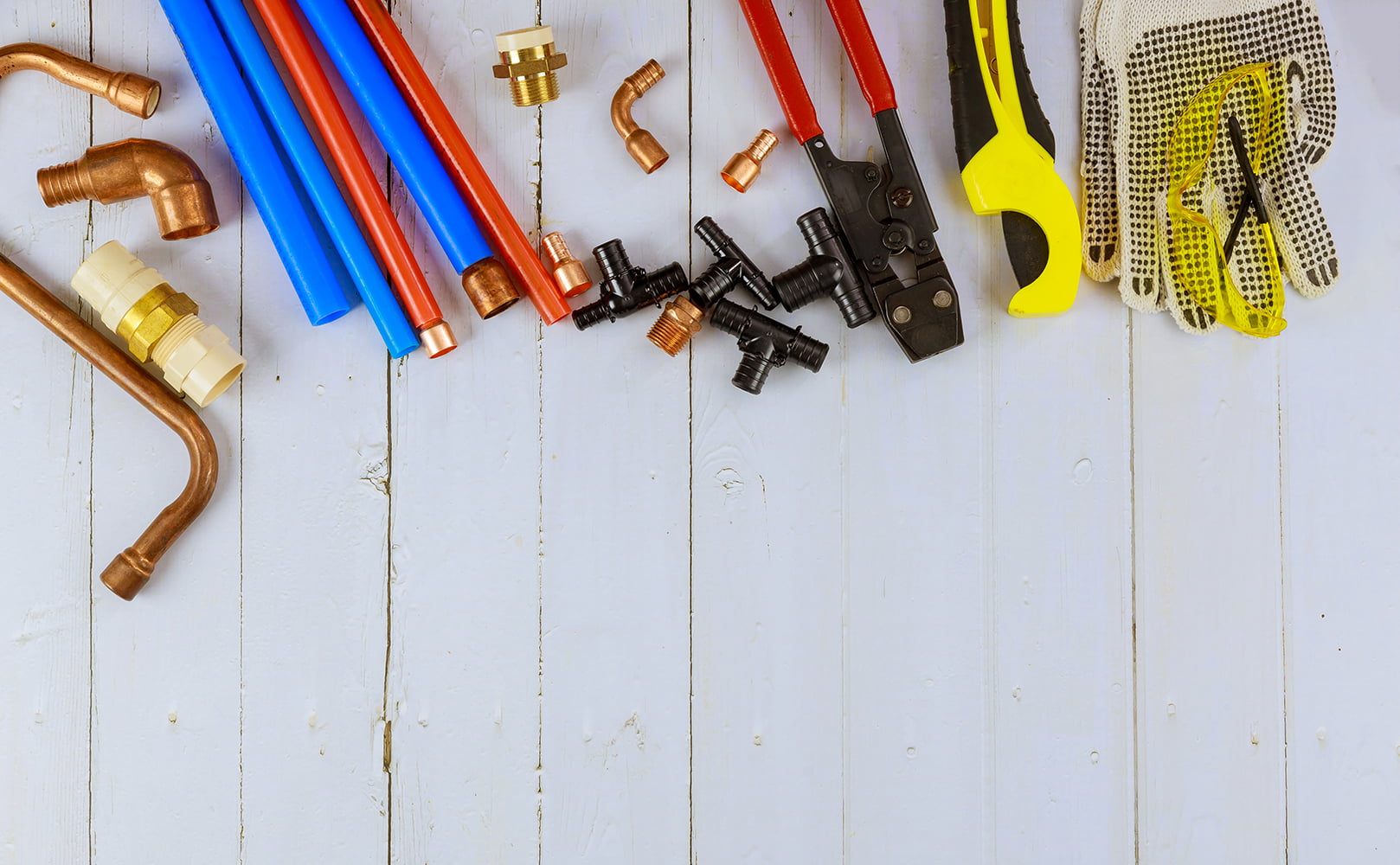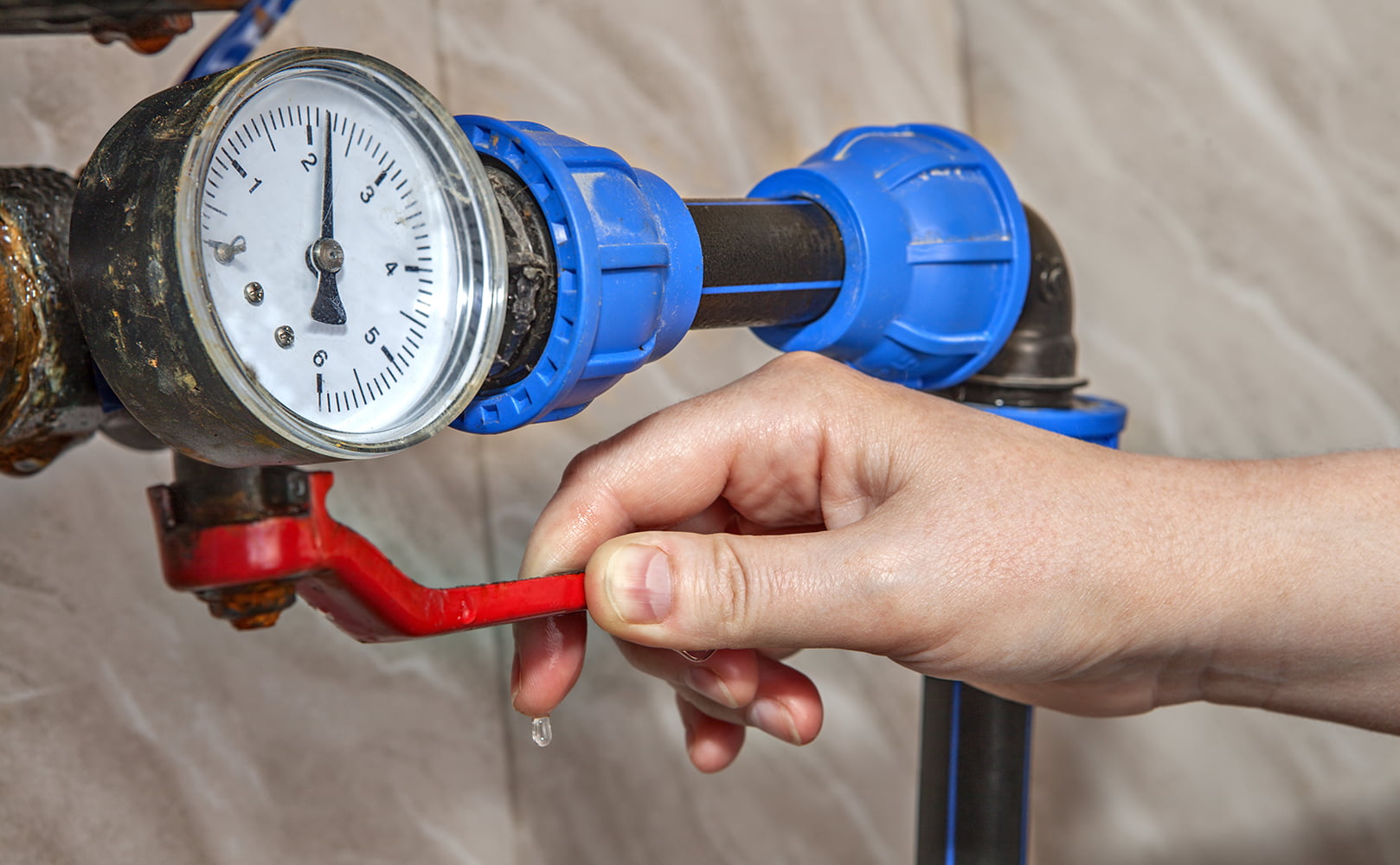DIY Whole House Reverse Osmosis System – Is It Possible? How?
Written by: Gene Fitzgerald // Last Updated: May 1, 2023
This page may contain affiliate links. If you buy a product or service through such a link we earn a commission at no extra cost to you. Learn more.
Knowing how to build your own solutions for various problems in life is one of the best skills to have.
However, it’s also important to be realistic and honest with yourself. When something is beyond the scope of a DIY project, you need to recognize that and work with professionals instead.
A DIY whole house reverse osmosis system fits that description pretty well. While it’s technically not completely impossible to build one yourself, it would require a significant investment of time, money, and effort.
So, can it be done?
Key Takeaways
- A whole house reverse osmosis system is too complex for the average person to build from scratch. While it’s theoretically possible, it’s usually not feasible due to the complex nature of the project, especially when it comes to finding fitting parts and ensuring that everything is aligned properly.
- Our recommendation: Buy a ready-made whole house reverse osmosis system and install it yourself if you like a DIY challenge.
Can You Make a DIY Whole House Reverse Osmosis System?
Understanding how a whole house reverse osmosis water filtration system works is only one part of the problem. Even if you have a solid grasp on the theory, there are various other problems that will get in your way if you try to build one yourself.
For example, you need to ensure all components you’re using are designed to fit each other with regards to their flow rates, water pressure, filtration capacity, and other factors.
That’s why, realistically speaking, the closest one can get to making their own DIY whole house RO system is buying one and installing it themselves – which isn’t simple either, but it’s doable if you have the required tools and some experience with them.
If Possible, How Would One Make Their Own DIY Whole House Reverse Osmosis System?
If you’re still interested in building a DIY whole house reverse osmosis system, here is a brief rundown of what you would theoretically need. This list may not be complete, depending on the exact requirements of your household.
The System Components You’d Need
A reverse osmosis system is quite complex, despite relying on relatively simple mechanical principles. You’ll need a bunch of special components, some of which may be hard to procure.
Solenoid Valve
This is a special valve which will enable/disable your feed water supply when the tank input circuit is open.
Sediment Pre-Filter
Removes sediment from the water as a pre-filtration stage, protecting and improving the effectiveness of the reverse osmosis stage.
Membrane + Pressure Vessel
The RO membrane is one of the main components. It’s made of a very fine, semipermeable material that only allows water molecules to pass through. It’s housed in an elongated pressure vessel.
UV Filter
A UV filter can be added as an extra filtration step to target bacteria and various other microorganisms, killing them with a high level of efficiency without any physical contact with the water.
Pressure Gauges
Needed for monitoring the pressure level of various system components, including the membrane and pumps.
Valves
Like most other plumbing systems, whole house RO requires various valves for controlling water flow. This can come in handy for additional system features like recycling and wastewater management.
Pumps
Pumps provide the necessary pressure for the operation of your system.
Flow Meters
Flow meters help you keep the system within reasonable flow rate ranges, which is necessary for its smooth operation.
Pressure Switch
Used to safely turn off the system during a situation involving low pressure.
System Control
A general control unit which monitors the overall system and controls its parameters to ensure it works optimally.
Water Storage Tank
Tank for storing filtered water so that it’s always available on demand without having to wait.
Installing Your DIY RO System
If you don’t want to go through the trouble of building your own RO system from scratch, the next best thing is to purchase a pre-made one and assemble it yourself. This is less complicated, but still comes with some tricky parts that you need to watch out for.
Tools Needed
Here are some of the tools you’ll need for this operation. Keep in mind that the list is not necessarily complete and you may require additional tools in some specific situations.
- Adjustable pliers
- Teflon tape
- Pipe cutter
- Screwdriver
- Solder supplies
- Mounting brackets
- Valves
- Connectors
- Push fittings
- Elbows
- Tees
- Other types, according to your situation
The Setup
While there are different types of whole home reverse osmosis systems available on the market, the general setup for all of them is more or less the same.
- You first need to verify that your plumbing supports the required pressure and temperature levels.
- Then you need to hook up several water connections, including one for wastewater. This can be fed back into the system for additional filtration if you desire.
- You then need to connect the pumps and plumbing distribution system.
- After that, you’ll need to hook up the various electrical connections required for the system’s operation, including the re-pressurization pump and the UV filter.
- Pre-filtration is important, so you’ll need to account for the extra room this step requires and purchase appropriate filters.
- You may also have some extra components in your package, such as anti-scalant fillings. Pay attention to the instructions for their installation very carefully as some of those components are sensitive.
- Once everything is hooked up, you’ll need to adjust the system’s flow rates before you can use it. This requires some precise configurations in some cases, and you should observe the appropriate pressure limits for your system size and flow rate.
Why Build Your Own DIY Whole House RO System in the First Place?
As you can see, building your own POE RO system from scratch is a bit pointless if you can afford to buy one directly. However, it can still be an interesting challenge for someone who enjoys complex DIY projects and has some knowledge of mechanics, plumbing and electricity.
It could also be an opportunity to save money, although that’s debatable. In the end, you’d still invest a lot of your time in the system’s setup and installation, which has a cost of its own.
Do You Even Need a Whole House Reverse Osmosis System?
Not every household needs a reverse osmosis system. Typically, they are only used in cases of severe water contamination. Living away from the city and sourcing your water from a well is a common scenario which calls for the use of whole house RO. If you’re getting your water from your local municipal supply, it’s likely that it’s already treated for many types of contaminants.
Having Your Water Tested
The only way to be sure that you need a reverse osmosis system is to have your water tested. This can be done relatively cheaply and quickly with the help of a professional testing facility, and it will provide you with a comprehensive overview of the exact types of contaminants you’re dealing with, as well as their concentrations.
It’s also possible to purchase a self-test kit that you can use yourself, but tend to be are far less precise and don’t provide you with a complete overview of your situation.
If you have any questions about a diy whole house reverse osmosis system please don’t hesitate to leave a comment below!
Information provided on BOS is for educational purposes only. The products and services we review may not be right for your individual circumstances.
We adhere to strict editorial guidelines. Rest assured, the opinions expressed have not been provided, reviewed, or otherwise endorsed by our partners – they are unbiased, independent, and the author’s alone. Our licensed experts fact-check all content for accuracy. It is accurate as of the date posted and to the best of our knowledge.



